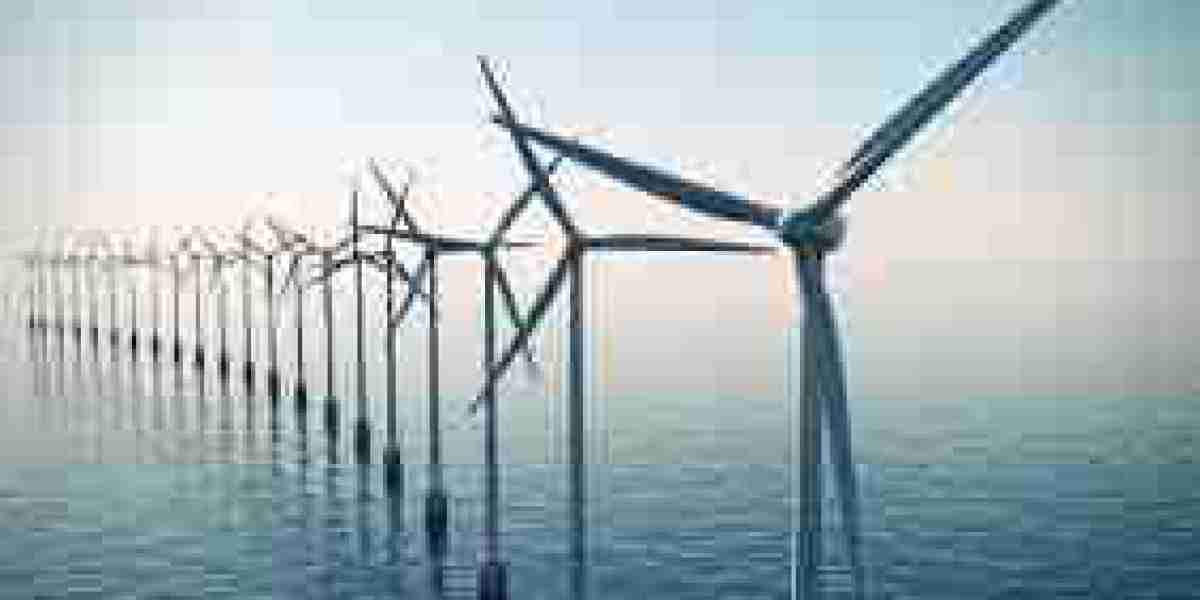In recent years, the offshore wind energy sector has experienced rapid growth, establishing itself as a key pillar in the transition to clean energy. With increasing investments, government support, and technological innovation, the offshore wind market is evolving quickly, reshaping the global energy landscape and creating new economic opportunities.
Rising Investments and Global Expansion
The global offshore wind energy market has seen a surge in investments, particularly in Europe and Asia-Pacific, with the United States now gaining momentum. Countries such as the United Kingdom, Germany, China, and Denmark have been pioneers in offshore wind deployment, driven by strong policy frameworks and climate goals. In 2023 alone, global offshore wind capacity surpassed 65 GW, and forecasts suggest it could exceed 200 GW by 2030.
Emerging markets such as Vietnam, Taiwan, Brazil, and India are also showing significant promise. These regions are beginning to develop large-scale offshore projects backed by government incentives and foreign investments, laying the foundation for long-term growth.
Technological Innovations Driving Efficiency
Technological innovation is a major factor propelling the offshore wind industry forward. Turbine sizes have increased dramatically over the past decade, with leading manufacturers like Siemens Gamesa and GE Renewable Energy introducing turbines exceeding 14 MW. Larger turbines not only produce more electricity per unit but also reduce installation and maintenance costs by requiring fewer units to achieve desired output levels.
Floating wind farms represent another breakthrough. Unlike traditional fixed-bottom turbines, floating turbines can be deployed in deeper waters, opening up vast new areas for development. Norway’s Hywind Tampen project and France’s Provence Grand Large are notable examples leading the way in floating wind innovation.
Advanced digital technologies such as AI, machine learning, and predictive analytics are also being integrated to enhance monitoring, operations, and maintenance, reducing downtime and increasing project lifespans.
Supportive Policy Frameworks and Climate Commitments
Policy support remains critical to the success of offshore wind development. Many governments are setting ambitious offshore wind targets as part of their net-zero emissions goals. For instance, the European Union aims to deploy 300 GW of offshore wind capacity by 2050. Similarly, the U.S. aims to deploy 30 GW by 2030 under the Biden administration’s clean energy agenda.
Support mechanisms such as Contracts for Difference (CfDs), tax incentives, and streamlined permitting processes are helping attract private investment and reduce financial risks. In Asia, countries like Japan and South Korea have introduced national roadmaps and incentive schemes to encourage offshore wind development.
International collaborations and public-private partnerships are also gaining momentum, facilitating knowledge transfer, funding, and faster project execution.
Environmental and Socioeconomic Impacts
Beyond clean electricity generation, offshore wind projects have positive environmental and socioeconomic effects. Offshore wind reduces reliance on fossil fuels, helping mitigate climate change and air pollution. Moreover, the construction, operation, and maintenance of offshore wind farms create thousands of jobs in engineering, manufacturing, logistics, and maritime services.
Port infrastructure is being upgraded, and new supply chains are emerging to support this growing industry. Local economies benefit from increased activity and long-term employment, particularly in coastal and industrial regions.
However, environmental concerns such as impacts on marine biodiversity, bird migration, and fishing zones must be addressed through comprehensive environmental assessments and stakeholder engagement. Innovation in eco-friendly turbine design and strategic siting is helping to balance development with conservation.
Challenges and the Road Ahead
Despite strong momentum, the offshore wind market faces challenges. These include high initial capital costs, complex permitting procedures, and supply chain bottlenecks. Grid integration and energy storage are also critical areas requiring attention to ensure stable electricity delivery.
The global market is becoming increasingly competitive, with countries racing to localize supply chains and reduce dependency on imports. The success of the offshore wind industry will depend on continued investment in R&D, policy consistency, and international collaboration.
In conclusion, the offshore wind energy market is at a transformative point. With supportive policies, cutting-edge technologies, and a shared global commitment to decarbonization, offshore wind will play a central role in shaping a sustainable and resilient energy future.




